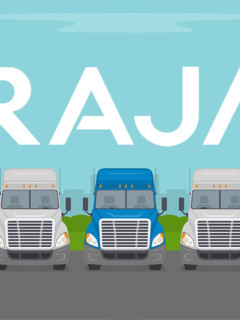The competitive pressure in e-commerce is high. Competitors are always just a click away. The times when it was necessary to travel to the local shop or to place catalogue orders regardless of location are only nostalgic memories for most people. Competitors can no longer be counted on the fingers of one hand, but consist of all the providers on the World Wide Web who offer the same or a comparable range of products. Online shops abound – e-commerce giants like Amazon, Otto and Zalando are at the forefront. Customers are spoilt for choice, which makes it increasingly difficult for online retailers to build up a solid customer base.
How are discounts accepted?
The online-savvy target group between 18 and 49 in particular wants discounts, almost expects them, as a survey by the online portal Shoop.de shows
- 77 percent of German shoppers compare products and prices before buying.
- 73 percent would change shops for a better price.
- 23 percent have abandoned online shopping due to a lack of bonus programmes.
- 22 percent of consumers online and offline specifically choose shops with bonus programmes or special discounts.
Discounts are not only part of many shoppers’ expectations, in many cases they trigger the buying process in the first place:
- Offers attract the attention of 70 percent of Germans.
- 61 percent say that high discounts are the reason for buying.
- 39 percent look at offers even without a specific request.
The German consumer gets an overview of the product, price and discount in advance. In online retail, it is often the price that decides on the purchase. But not every online retailer has capacities like large e-commerce retailers. Smaller retailers lose the price war and have to position themselves accordingly. Because discounts reduce the margin and thus equally the profitability, arouse false expectations in the customer or spoil the high-quality corporate image.
With the right discount strategy, however, long-term goals such as increased turnover, improved customer loyalty and new customer acquisition can be achieved in e-commerce.
What discounts are available?
Whether time-limited discounts, quantity discounts, combination offers, promotional offers, discounts for certain target groups, vouchers, gifts or free delivery: in e-commerce there are many ways to make purchases attractive. Depending on the discount strategy, the order value is increased with the help of the options mentioned. Ultimately, a discount makes the customer happy and entices him to spend more money.
Increase the order value with time-limited discounts
Most offers and promotions are limited in time. This has several advantages. On the one hand, the limitation creates a certain pressure on the customer to buy. Instead of coming back later, they buy immediately.
Examples:
- Free shipping for orders placed during the lunch break between 1 pm and 2 pm.
- Two-week introductory offer when launching a new product.
Increase order value through quantity discounts
Staggering prices by quantity leads to the consumer buying more than just the items they need – otherwise no discount is given.
Examples:
- Three T-shirts for the price of two.
- Five items or more get a 10 per cent discount, 20 items or more get a 15 per cent discount, 50 items or more get a 20 per cent discount, etc.
Increase order value through combination offers
A discount with combination offers or with cross-selling tempts consumers to put more items than planned in the shopping cart. With cross-selling, items matching the selected product are suggested to the customer during the check-out process. Combination offers offer matching products in a package at a lower price than the individual products.
Examples:
- When buying a notebook, a matching case and an HDMI cable are offered.
- A perfume and matching shower gel are available as a combo cheaper than both products would cost individually.
Increase order value through promotional offers
Promotional offers use a specific occasion for discounting, such as summer sales, winter sales, Arbor Day, … There are no limits to creativity when it comes to choosing suitable promotional days. The best-known promotion days in e-commerce are Black Friday and Cyber Monday.
Examples:
- 30 per cent off all summer items.
- 70 percent off a certain TV model only on Black Friday.
Increase order value through discounts for specific target groups.
Through detailed targeting, a discount can only be made known within certain target groups. Popular target groups are, for example, new customers to whom one wants to make the first purchase palatable. The relationship with existing customers can also be cultivated through discounts. Or a customer group that has not ordered anything from the online shop for a long time can be reactivated.
Examples:
- 20 euro voucher for all new customers.
- 15 percent discount on the next order of existing customers.
Increase order value with vouchers
Voucher portals can reach groups of shoppers who are specifically looking for bargains but are not yet familiar with the online shop or are simply browsing.
Examples:
- 20 percent voucher on all sales items.
- 15 Euro voucher when registering for the newsletter.
Increase order value with gifts
Everyone actually likes gifts. Gifts therefore also create an incentive to buy. Those who have already decided to buy products from the online shop anyway are usually also willing to add more products to the shopping basket in order to receive the gift.
Examples:
- Two perfume samples with every shopping basket.
- An umbrella for the autumn season with a shopping basket value of 50 euros.
Increase order value through free delivery
Following the example of Amazon Prime, many online shoppers take free delivery for granted. Those who do not already offer free delivery can link it to a minimum order value and thus ensure additional purchases. For high-priced products, it is also advantageous to calculate the price including shipping costs, because high postage costs deter shoppers.
Examples:
- Free delivery with an order value of €50 or more.
- Free delivery on all washing machines.
Is customer loyalty a question of discount?
Customers look for the best deals and are extremely flexible in their choice of online shop. Nevertheless, price is not the only criterion that attracts potential customers and binds existing customers. Rather, it is the overall package that counts. When customers buy something, they want to be sure of their purchase.
The trust that comes with the online shop plays an important role here: if the selected product is available at a lower price in another shop, but this shop has many bad reviews regarding compliance with the delivery time, the consumer is willing to pay more money for the same product in a trustworthy online shop.
The situation is similar with other services: Product support after purchase, free return shipping, extended warranty, connecting the new appliance and taking the old one with them (e.g. washing machine, cooker) and many other reasons influence purchase decisions and convince consumers not to opt for the cheapest offer.
Discount or not?
If you don’t buy, you can’t save! A statement that hits the mark. Consumers are sensitised and have the opportunity to compare prices and services transparently through various price comparison portals. For example, when Christmas shopping, they can find out what is really cheaper before Christmas. Even if the price has a decisive influence on the purchase decision, the customer is quite prepared to pay more money for security and additional services.Online shops should therefore not place offers that merely reduce the margin, but actually pursue a discount strategy in e-commerce. Not all discount models are suitable for every online retailer. Those who offer higher prices should use this in their communication and communicate the advantages and additional benefits to the customer. Discounts yes, but not under all circumstances.















